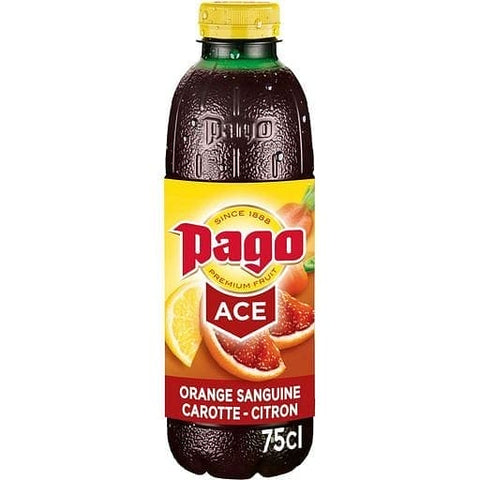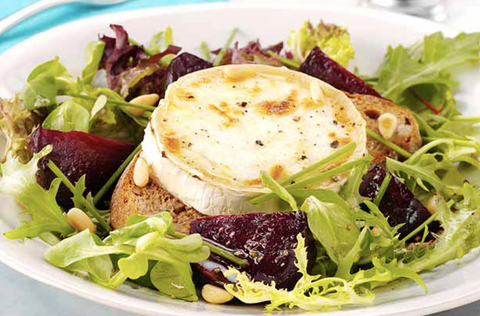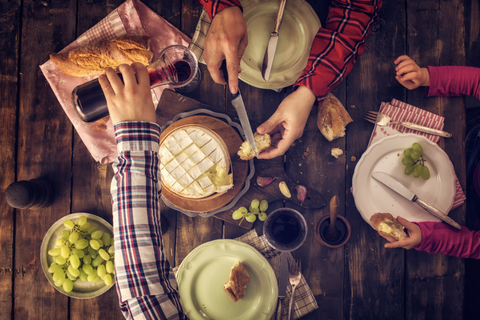Seafood platter
The idea of a platter of seafood seems so indulgent and luxurious. In France, they use the term 'plat de fruits de mer' to refer to these platters, typically served as an appetizer. They're also sometimes called plateau de fruits de mer. whatever you call it; these seafood platters have one thing in common: they're loaded up with delicious shellfish.
Normally, I'd think of this type of dish as something that you'd only get at restaurants or upscale hotels (and as you can imagine, it would come with a hefty price tag). However, this type of platter isn't hard to make at home. On the contrary, it's surprisingly simple, and it doesn't take much time or effort to put together. It just requires some planning ahead so that you can be sure to use only the freshest ingredients possible!
How do you eat a French Seafood Platter?
The first thing to do is to obtain a fresh platter. Place the platter in front of you on a table. Do not attempt to eat the platter. It will only cause much confusion and embarrassment and possibly result in a trip to the local hospital for surgery.
Arrange your utensils so that the knife is closest to you with the fork away from you. This is important and must be observed at all times unless you are having a picnic and eating with your hands. If dining in an elegant restaurant with white tablecloths, please do not use your hands even with a breeze. The staff may frown upon this and kill you later that night when they take their break.
Now start with the shellfish closest to you, such as oysters, mussels, scallops or shrimp. Use your fingers to remove these from the platter and place them neatly on your plate. If there are no plates for some reason, go ahead and put them back on the platter since that is what it was designed for anyway.
What fish is in a fruit de Mer?
A fruit de mer platter will include oysters, clams, mussels, prawns and sometimes lobster or crab. It might be served with a dipping sauce or mayonnaise, but other than that, it is essentially a dish of raw shellfish.
A fruit de Mer is a classic French dish that translates as 'seafood', and indeed a fruit de Mer platter will include oysters, clams, mussels, prawns and sometimes lobster or crab. It might be served with a dipping sauce or mayonnaise, but other than that, it is essentially a dish of raw shellfish. The traditional way to serve a mixed platter like this is on a bed of ice.
A Fruit de Mer is easy to prepare
One of the great pleasures of French food is its many classic dishes. You can spend a lifetime exploring them and still have plenty to look forward to. But, unfortunately, it's also true that some of these traditional dishes can be difficult to cook. One example is a fruit de mer – a platter of assorted shellfish that may include oysters, clams, mussels, prawns, crabs and lobsters – which can cause real headaches for the cook.
The problem is not just the variety of creatures on the plate; it's their different cooking times. For example, lobsters need only a few minutes in boiling water, while mussels require eight or nine. So if you're serving them all together, how do you ensure everything is ready at the same time?
One solution is to have your fishmonger prepare the platter for you. Far from being cheating, this can make your life easier if you're cooking something else as well. But if you want to do it all yourself, there are two keys: planning and precooking.
First, plan by thinking about what else you'll be serving for dinner (assuming this isn't the main course). The more courses there are before dessert, the simpler your fruit de mer should be in the meal.
Decorating a Seafood Platter
For a seafood platter, it's best to use simple decorations and focus on the food. Some good options include lemon wedges, parsley sprigs and cherry tomatoes. Other ways to decorate a seafood platter include using crab shells, ice, and plates shaped like seashells or fish.
When decorating a seafood platter, make sure the decorations highlight the food without overpowering. For example, if you're using cherry tomatoes as a decoration, don't use them so liberally that they take over the platter.
Here are some tips:
- Add color to your platter by putting green vegetables on it. You can use red cherry tomatoes or perhaps lemon or cucumber slices. It will add brightness and color to your platter. You can also add parsley and dill to the plate.
You can add pansies, nasturtiums and violets to the platter. Use a small amount of these flowers as they have a strong taste.
- Add a bowl of mayonnaise to the centre of the platter. This is a great way to dress up your seafood platter. The mayonnaise can be used for dipping.
- Chill your platter in the refrigerator for at least an hour before using it. This will ensure that your seafood stays cold longer, even when the ice melts.
- Place coleslaw, macaroni salad or tartar sauce on one side of the platter. The other side is where you'll arrange the seafood.
- Arrange seafood around a bowl of cocktail sauce placed in the middle of the tray. Try to leave some space between each food item and vary their height to make your platter look more attractive.
- Add garnishes: You can use lemon wedges, cocktail onions and sprigs of dill or parsley to add color and flavour to your seafood platter.
Why is Seafood served on ice?
It's not just seafood that gets the ice bath treatment. Fruits and vegetables, and even meats, are sometimes displayed on ice but why?
Food safety is one major reason. When it comes to seafood, not only does ice help keep the fish fresh and safe to eat, but it also helps preserve the flavour and texture.
The colder you can keep them while they're on display, the fresher they'll be. Don't think raw meat or seafood is like milk; it's not going to go bad in a day or two and keeping food on ice helps minimize the growth of bacteria.
We use ice as a means of cooling for our prepared foods so that we can maintain product quality and safety. We use new sanitized ice for every product display.
- While it's true that fresh fish doesn't have much of a scent, it still has a smell — just not one we can detect. You see, our sense of smell is thousands of times more sensitive than that of a dog, and the nose of a cat is even more sensitive than ours. But those aren't the noses we were talking about.
- There are several species of dead-nosed fish out there. Seafood smells bad when it spoils because bacteria break down proteins and fats in the flesh, causing it to decay and stink. However, they don't spoil as quickly when you keep those proteins and fats chilled.
This brings us back to why we keep seafood on ice at all. Some people think it keeps fish cold enough to avoid spoiling quickly. And while that isn't entirely off base, it's not really why we do it either.
The real reason is to slow down bacteria growth as much as possible to preserve freshness as possible.

What sides go well with Seafood?
Fish is a delicious and healthy meal, but it can be hard to think of good sides to go with it. There are many fish types, but each style is prepared differently.
The best side dishes for fish are often bright and fresh, such as salads, slaws, and simple grilled vegetables. If you're eating a hearty fish like salmon or cod, your side should be light and fluffy, so you don't feel bogged down. However, if you have something light like white fish or steamed shellfish, you can get away with heartier sides like roasted potatoes or pilafs.
- If you're looking for the perfect side dish for your next seafood meal, read on for some great ideas!
The best side dishes for seafood are light recipes and complement the flavour of the fish. Here are some of our favourite side dish recipes that go well with seafood:
- Roasted Sweet Potatoes
- Grilled Corn on the Cob with Garlic-Herb Butter
- Quinoa Tabbouleh Salad
- Mediterranean Couscous Salad
- White Beans & Spinach
- Farro Salad with Asparagus and Feta Cheese
There are lots of things you can serve with Seafood. Here are a few ideas:
Citrus: Seafood goes well with lemons, limes, and oranges.
Salsa: Serve salsa with fish tacos or fish fillets.
Vegetables: Serve grilled or baked fish with a vegetable side dish like steamed broccoli or roasted carrots.
Starchy sides: Boil pasta to go with shrimp scampi or other seafood dishes. Make rice to serve with salmon and stir fry vegetables.
What Seafood do French people eat?
Seafood is an essential part of French cuisine. Since France has a coastline on the Atlantic (in the west) and the Mediterranean (in the south), fish and shellfish are important in both areas' cooking. The main types of seafood eaten in France include:
Seafood is an essential part of French cuisine. Since France has a coastline on the Atlantic (in the west) and the Mediterranean (in the south), fish and shellfish are important in both areas' cooking. The main types of seafood eaten in France include:
- Bouillabaisse (fish and shellfish stew)
- Moules frites (mussels and fries)
- Salade Niçoise (salad with tomatoes, anchovies, tuna, olives, hard-boiled egg)
- Ratatouille (vegetable stew)
- Seafood paella: is a dish originating from Valencia in Spain that is prepared with rice and can include mussels, shrimp, lobster and other seafood.
Vegetables that go best with Seafood
Vegetables are an ideal side dish for fish. I generally like to grill vegetables and keep them simple by seasoning with salt and pepper. Then I choose a sauce or dressing for the vegetables that pair well with the fish.
Vegetables have the added benefit of being relatively low in calories, so you can add a nice side without adding too many calories to your meal. Unlike starchier potatoes, they also cook quickly.
Here are some suggestions:
Asparagus - Season with salt and pepper and grill or roast until tender, about 10-15 minutes at 450 degrees. Toss with a citrus vinaigrette or other light dressing. White wine, in particular, is a nice complement to asparagus and fish.
- Grill over indirect heat until crisp-tender, about 10 minutes, stirring occasionally.
- Toss with your favourite vinaigrette or salad dressing.
- Green beans: French green beans (haricot vert) are my favourite choice because they're so thin that they cook quickly when grilled over direct heat - 4-5 minutes - but regular green beans will work fine as well. Season with salt and pepper before grilling and toss with olive
What kind of wine goes with Seafood?
The first thing to remember is that there isn't one wine that goes with all seafood. There are many types of fish and shellfish, and each has different flavours. Some have more delicate flavours; others have stronger ones. They can also be prepared in many different ways.
Your best strategy is to match the intensity of the wine to the power of the seafood, whether it's a simple grilled salmon fillet or a rich lobster pasta dish.
Here are some suggestions for matching wine and Seafood:
Lighter white wines, such as pinot grigio or sauvignon Blanc, go best with delicate fish like sole, flounder or tilapia. They don't overwhelm the flavour of these dishes. Try a richer chardonnay or a dry Riesling with stronger-flavoured fish like salmon, trout, and swordfish. Both of these varietals have enough body to stand up against those flavours without overpowering them.
A light sparkling white wine (or rosé) can add an extra dimension of flavour to ultra-delicate dishes like sushi or sashimi. Champagne works well, too but is usually overpriced for this purpose.
So enjoy the seafood platter with many varieties of seafood.




